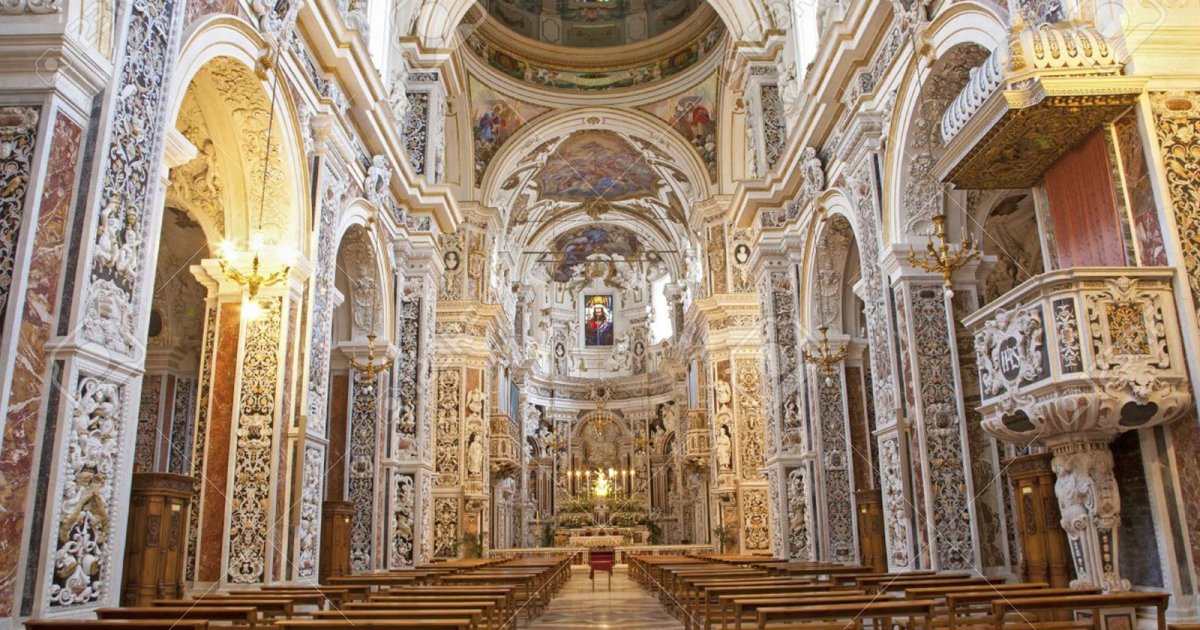CHURCH OF THE GESÙ, Presentation
 Language: English / USA
Language: English / USA
Hi, my name’s Marcy, and I’m your personal guide. Along with MyWoWo, I’d like to welcome you to one of the Wonders of the World: the Church of the Gesù.
The Church of the Gesù, also known as Casa Professa, was founded by the Jesuits and is one of the most beautiful and important Baroque buildings in Sicily.
In 1549, the Jesuits were summoned to Palermo to preach and to take care of public education. The Norman abbey of Santa Maria la Grotta was thus given over to them to be turned into a Casa Professa, or mother house, as Jesuit churches with a school adjacent to them are known.
Work on the new church began in 1564, under the direction of Giovanni Tristano, a Jesuit from Ferrara who designed a rather simple, functional structure.
After 1575, the church was expanded by the Jesuit architect Giuseppe Valeriano, in an austere form that perfectly reflected the rigor of the Jesuit Order.
At the beginning of the 17th century, when the churches of the Order were no longer compelled to reflect the rigor of their origins, but rather the triumph and glory of Catholicism, a new building campaign was undertaken under the direction of Natale Masuccio from Messina, who gave the church the elaborate Baroque appearance we can see today.
The dome, which collapsed in 1655, was replaced in 1685 with the one designed by Angelo Italia, a Jesuit and one of the leading figures of Sicilian architecture. Unfortunately, it was destroyed again in 1943 by the Allied bombing raids that followed the invasion of Sicily, and was reconstructed in a different shape after the war.
The facade features architectural elements in dark stone that stand out against the white plaster wall. Above the door, you can see a statue of the Virgin and Child: this is the Madonna della Grotta, a reminder of the earlier church that was demolished. At the top of the facade, you can see the coat of arms with the emblem of the Jesuits, the letters IHS: this is a Christogram, a combination of letters that if read in order form part of Jesus’s name.
An interesting fact: since the dome had not yet been created when the church was consecrated in 1633, a large painting was put in its place so it would appear to be part of the church.



